Main Content
Is the “Invasive Species of the Month” useful to you? Let us know how.
Wisteria sinensis and Wisteria floribunda
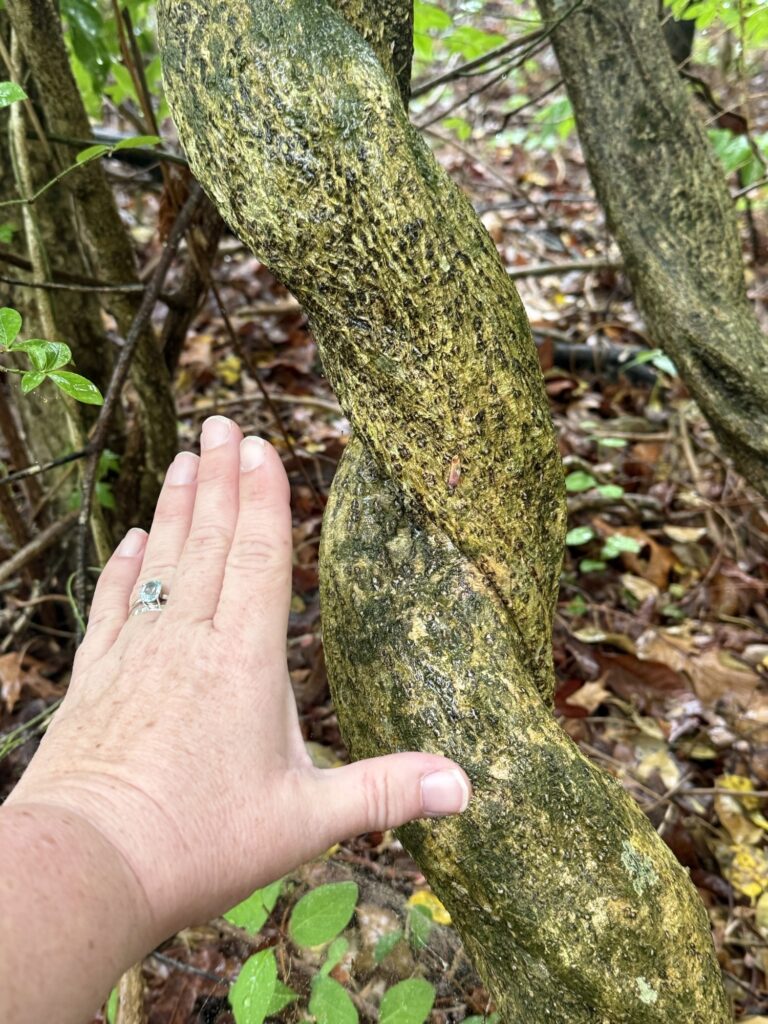
Photo credit: J. Sawyer Caraballo
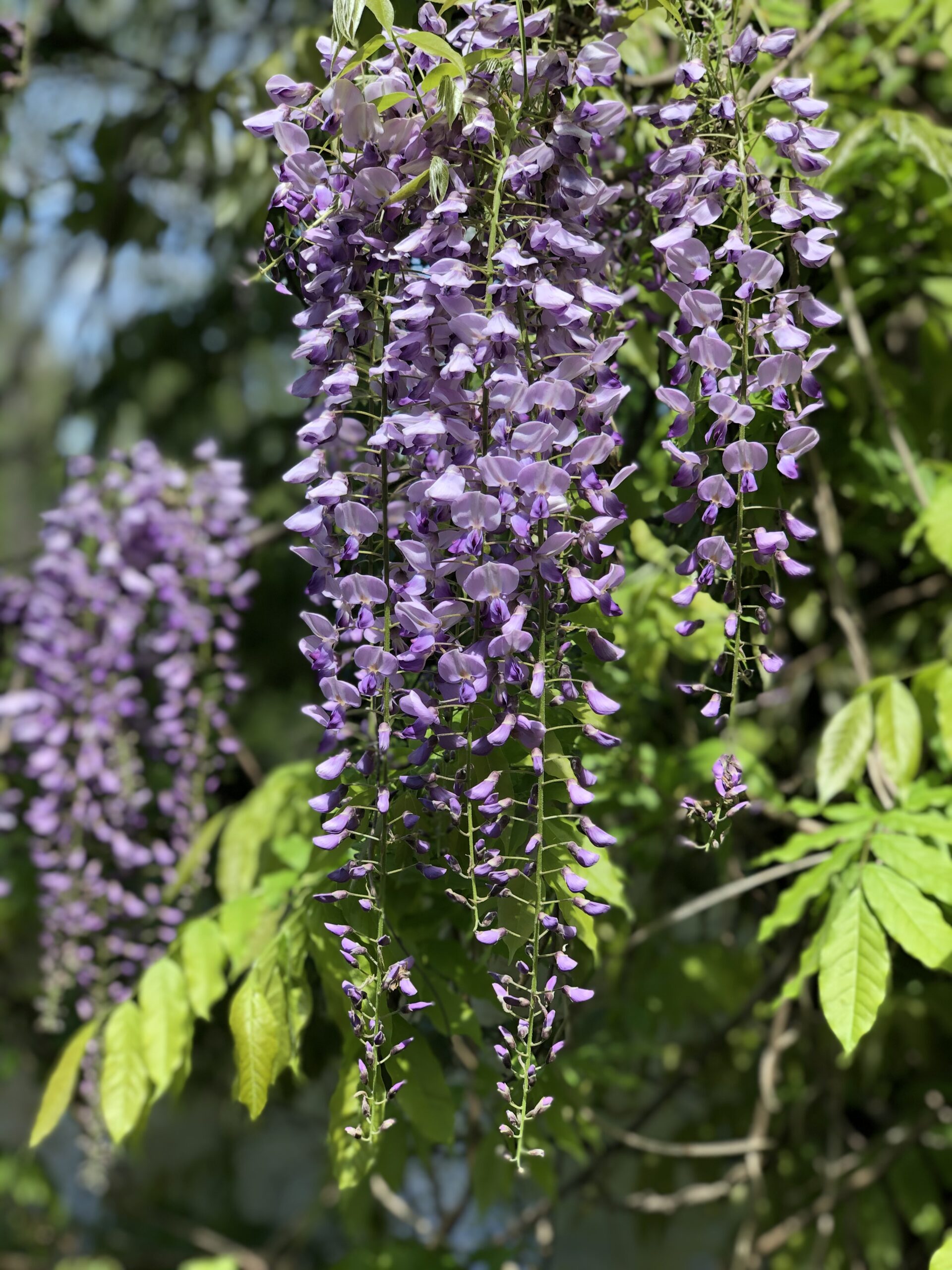
Photo credit: T. Maguire
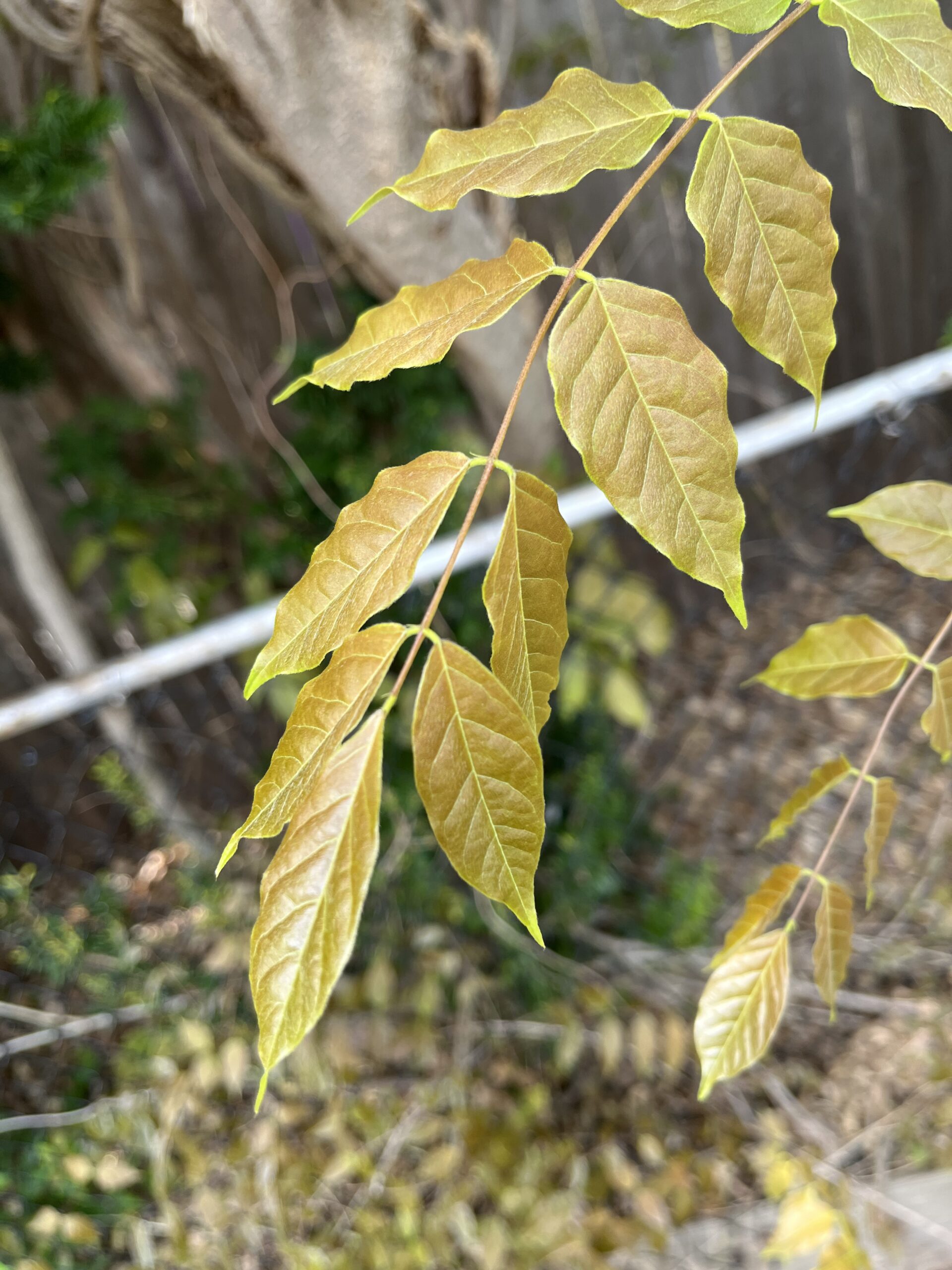
Photo credit: T. Maguire
Invasive vines such as Wisteria spp. can kill healthy, mature trees. Simple actions like controlling invasive vines can help save trees which are vital for capturing greenhouse gases and reducing the impact of climate change.
Ecological threat: Chinese wisteria, Wisteria sinensis, and Japanese wisteria, Wisteria floribunda, are both ornamental vines commonly planted in landscapes on arbors and trellises. The invasive species covered here are collectively referred to as “wisteria”. Both species invade all types of natural areas including forests, gardens, roadsides, and any other landscape type. Wisteria twists tightly around tree trunks, cutting into and strangling the tree which eventually dies. It also climbs over tree and shrub canopies covering foliage and preventing photosynthesis. Be on the lookout for invasive wisteria and their large lavender to violet inflorescence as it climbs trees looking for sunlight. Wisteria can form a carpet on the forest floor, blocking light and smothering native vegetation. Deer assist in the spread as they rarely eat this invasive vine and prefer native plants that wildlife need for food and habitat.
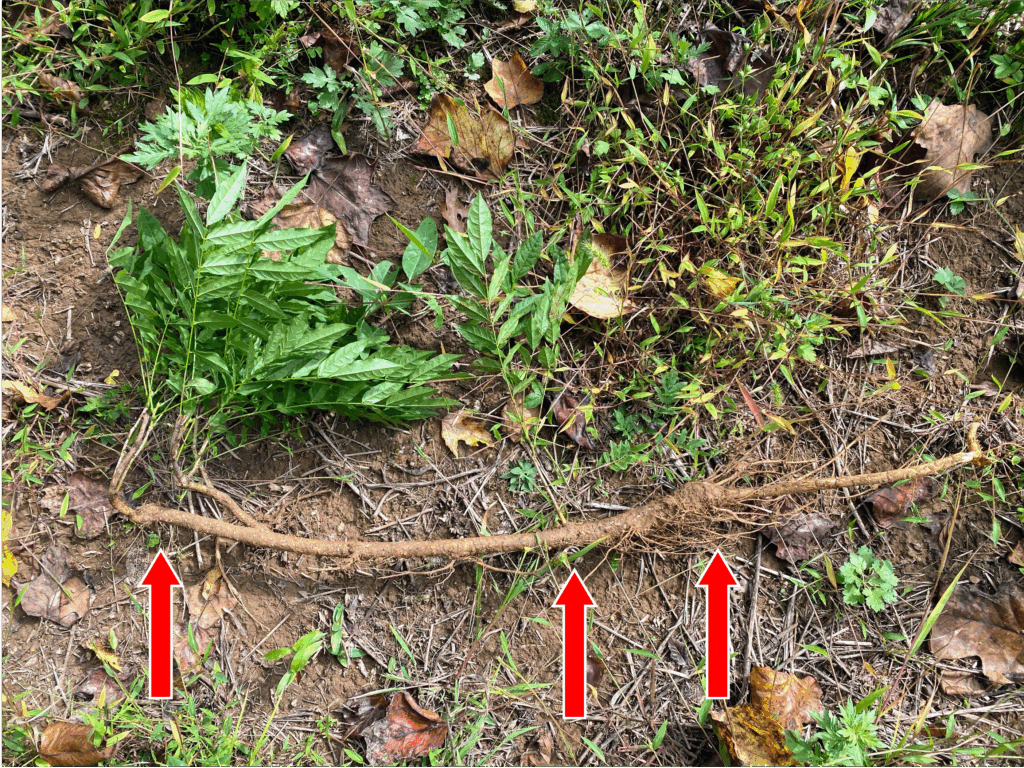
Photo credit: M. Bakacs
Method of spread: Wisteria spreads by seeds and runners (stolons) that root at nodes. Lateral runners can spread many feet just under the surface, but fast-growing taproots at every node make it extremely difficult to remove. Any root left in the ground can resprout. Wisteria grows quickly creating dense thickets, smothering native vegetation. It can grow up to 70 feet high by twining up trees.
Preferred habitat: Habitats invaded include forest interiors, openings and edges, fields, cliffs, steep slopes, and disturbed areas. Wisteria grows in the shade and full sun. It only produces flowers and fruit when allowed to climb up trees or trellis.


Photo credit: M. Bakacs
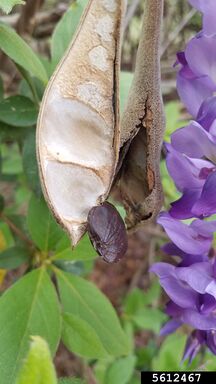
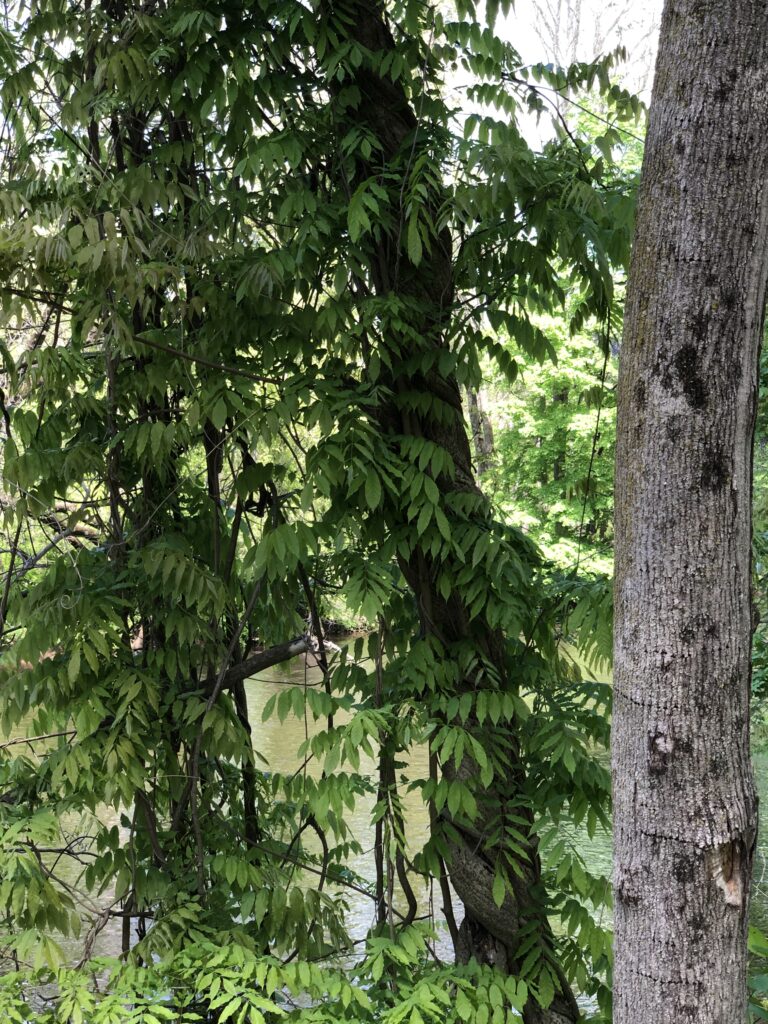
Photo credit: T. Maguire
Removal methods: For manual control, when infestations are small, wisteria can be hand pulled and repeatedly cut to exhaust the root system. Roots will re-sprout if left in the ground and repeated cutting is needed throughout the growing season as new growth appears. When vines are growing up trees, using a window-cut approach is an excellent method for killing top growth. This involves cutting the stem low to the ground and then again at chest height. Allow the above ground growth to die. Do not pull the vines off trees as that will likely damage the tree for example by ripping off bark or breaking branching. Make additional cuts to vines as needed to prevent tree strangulation. Make sure to monitor for re-growth. DO NOT compost the seeds or cuttings.
Early detection/rapid response is the ideal method for control; learn to identify this vine in small, seedling stages and monitor at-risk locations regularly.
For chemical control, note that large populations of wisteria are difficult to control with mechanical means alone due to its extensive root system. Roots will re-sprout if left in the ground without chemical treatment. For chemical control, foliar applications with a glyphosate/ triclopyr mix are effective when leaves are present. Ideally, pre-cut the stems first and foliar spray the regrowth 6 weeks later. Cut-stump or basal bark treatment may be difficult to administer with many, smaller stems but is effective on larger stems. Winter cut-stump applications can minimize damage to surrounding dormant species and can be done if temperatures are above 50 degrees F. Always follow the herbicide label instructions; the label is the law.
Post treatment, make sure to monitor the area for re-sprouts and new individuals for multiple seasons.
If you are not able to or are not comfortable using herbicides, hire a landscape professional that has a pesticide license and specializes in invasive plant management.
Alternatives
Coral honeysuckle, Lonicera sempervirens, is a fast-growing vine with the bulk of the red-pink-orange blooms in the spring and then intermittent blooms till the fall. It is drought tolerant, deer resistant, attracts hummingbirds and good for trellises, pergolas, and fences.
American wisteria, Wisteria frutescens, is native in the southeastern states from Texas to North Carolina. It is not native to New Jersey. W. frutescens thrives in moist soil and full sun, which promotes abundant summer blooms. It has less vigorous growth than the invasive wisteria species. It is good for arbors, trellis, and fences.
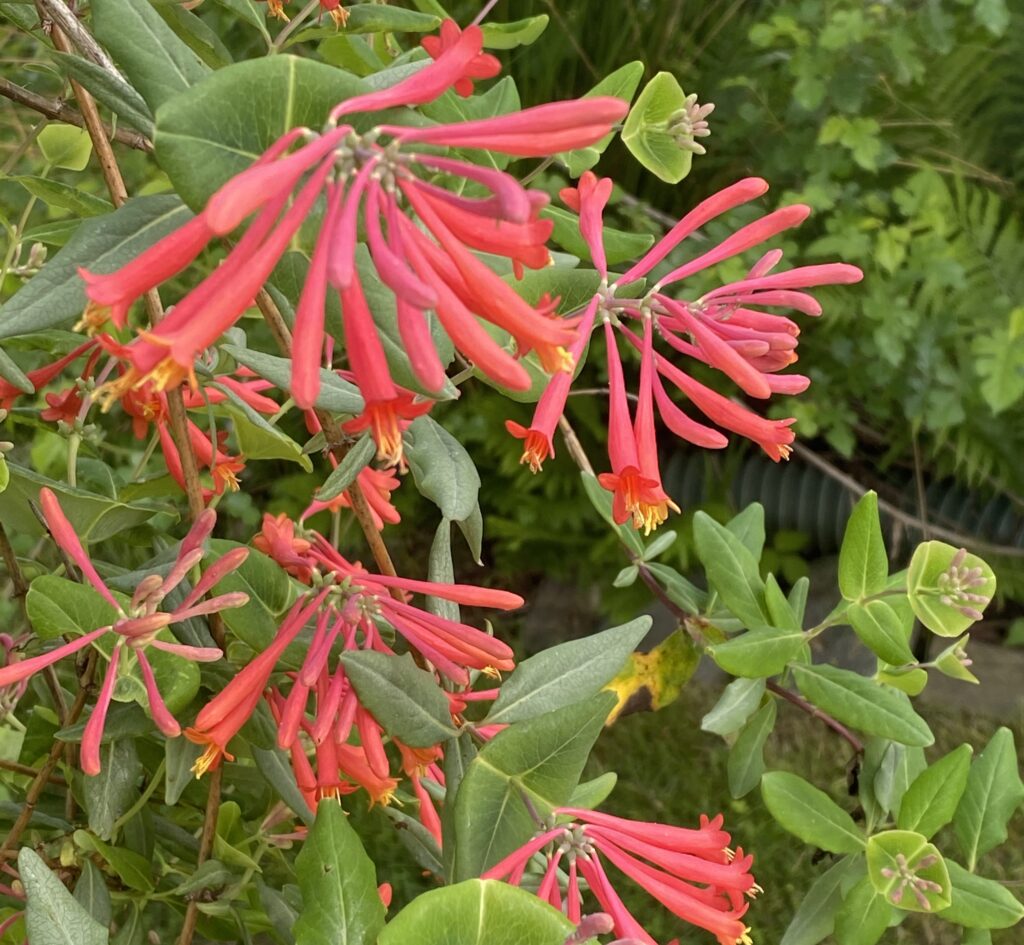
Photo credit: M. Bakacs
References and Resources
Friends of Hopewell Valley Open Space. New Jersey Invasive Species Strike Team Fact Sheets
Kaufman, S.R. and Kaufman, W. 2007 Invasive Plants- Guide to identification and the impacts and control of common North American species. Stackpole Books. Mechanicsburg, Pa.
Swearingen, J.M. and J.P. Fulton. 2022. Plant Invaders of Mid-Atlantic Natural Areas, Field Guide. Passiflora Press. Available at https://www.invasive.org/midatlantic/fieldguide/
Penn State. Exotic Woody Vines. Invasive Plant Species Management Quick Sheet 9. Available at https://plantscience.psu.edu/research/projects/wildland-weed-management/publications/invasive-species-quicksheets
Thank you to our reviewers: Patricia Maguire, Phillip Round, and Michael VanClef.
The goal of Rutgers Cooperative Extension’s “Invasive Species of the Month” is to highlight those organisms that are non-native to New Jersey and cause economic or environmental harm, or harm to human health. We can all help prevent the spread of invasives by learning which species are a threat to our ecosystems.